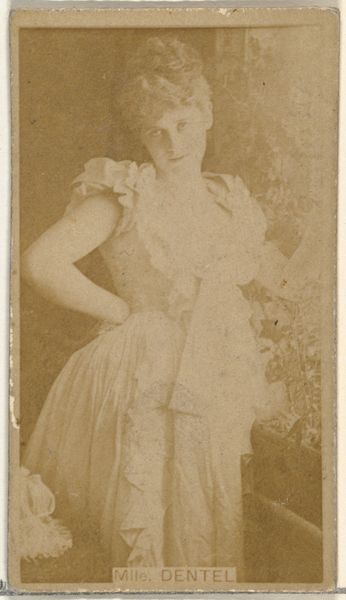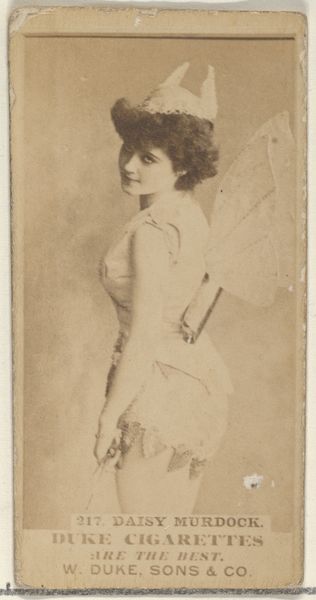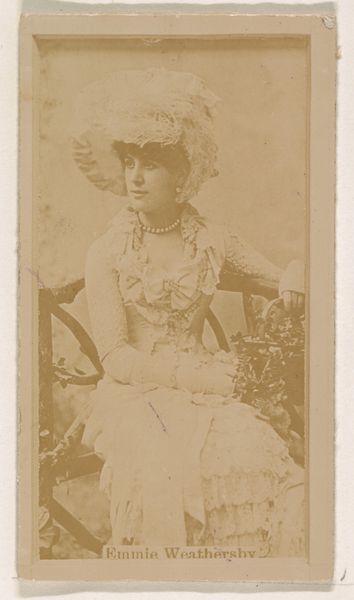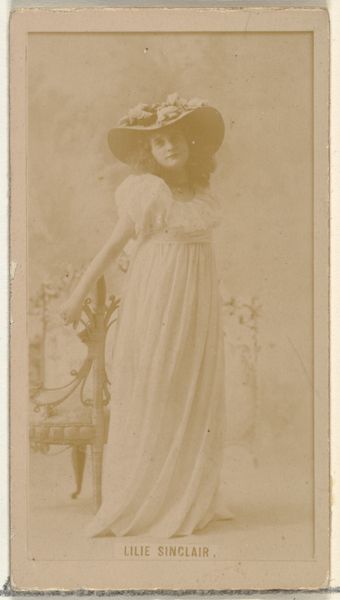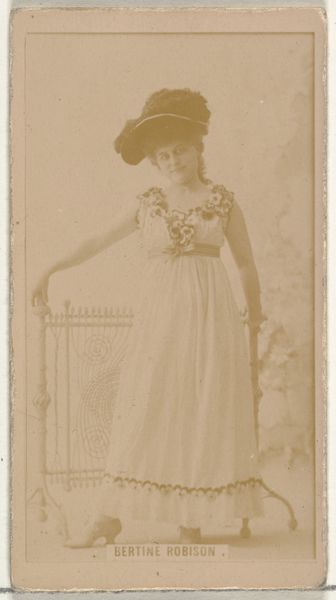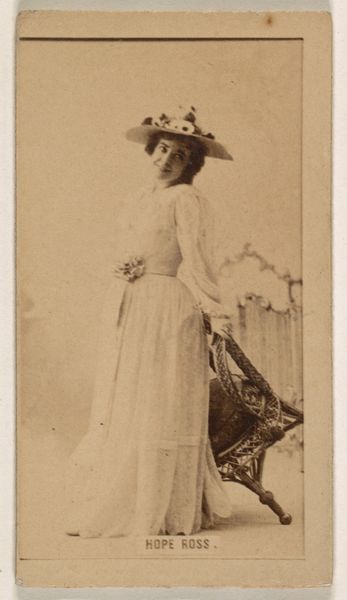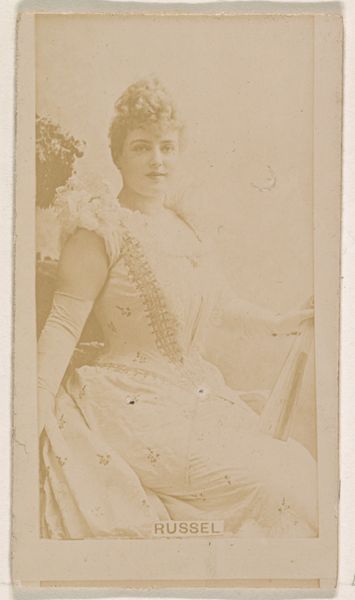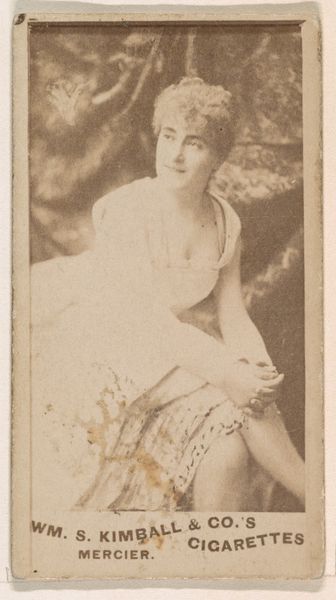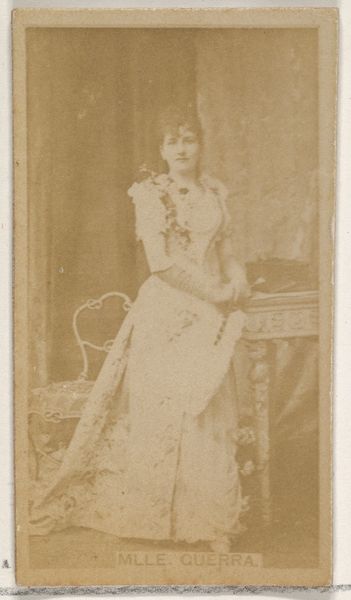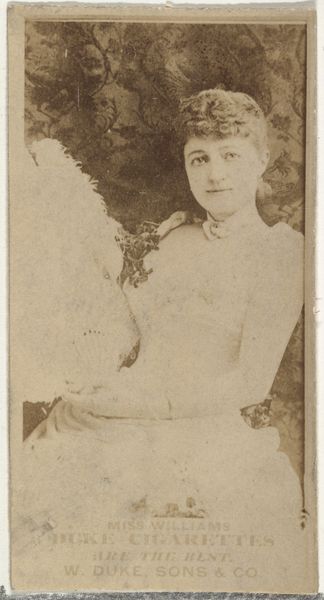
Lillian Russell, from the Actors and Actresses series (N145-7) issued by Duke Sons & Co. to promote Duke Cigarettes 1880s
0:00
0:00
print, c-print, photography
#
portrait
# print
#
impressionism
#
c-print
#
photography
Dimensions: Sheet: 2 11/16 × 1 3/8 in. (6.8 × 3.5 cm)
Copyright: Public Domain
Editor: Here we have a trade card from the 1880s, featuring the actress Lillian Russell. It was printed by W. Duke, Sons & Co. to promote Duke Cigarettes. What strikes me is the contrast: a celebrity likeness rendered using a mass-produced technique for something as everyday as cigarettes. What's your take? Curator: Absolutely, that tension is key. Forget about the actress's radiant beauty for a second. Instead, focus on how photography, coupled with printing technologies of the late 19th century, served nascent capitalist desires. These weren’t artistic endeavors in the traditional sense, but promotional materials designed to move product. Editor: So, you're saying the artistic merit, or lack thereof, is secondary to the commercial function? Curator: Precisely! The "art" here becomes less about aesthetics and more about industrial production. The printing process itself—the inks, the card stock, the speed of reproduction—is central to understanding the piece. Each card represents a small unit of labor, embedded in a larger network of commodity exchange. How does thinking about that industrial process affect how we read the image? Editor: Well, knowing this was churned out en masse makes the image feel less special, less like a unique artistic statement and more like, say, branding. Curator: Exactly! And that changes our relationship to it. This card collapses high and low culture; celebrating celebrity through something affordable. The actress’s fame is leveraged to boost cigarette sales, commodifying her image alongside the cigarettes themselves. The consumption of both becomes intertwined. Editor: That's a fascinating perspective. I tend to see art in a gallery first and marketing a distant second, so to hear how production for mass consumption shapes how we consider even a portrait... that flips things on its head. Curator: Indeed. Shifting our focus to production, materiality and social context invites a completely new conversation, helping us recognize how much capitalist desire has changed the art landscape.
Comments
No comments
Be the first to comment and join the conversation on the ultimate creative platform.
